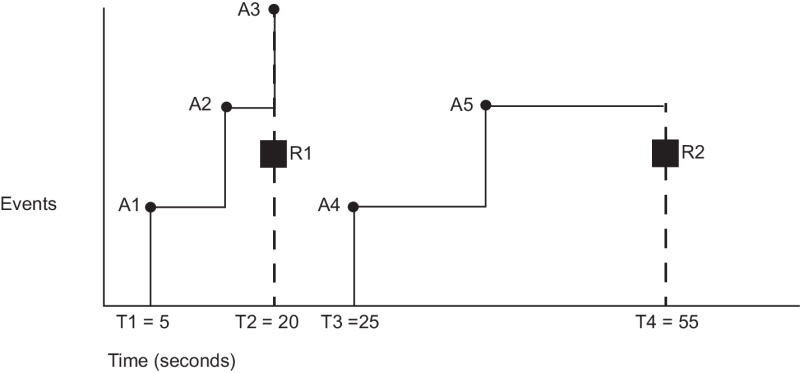Alarm Options Module
The Alarms Options Module is used with the SNMP Options Module for SNMP trapping.
Module icon
![]()
Overview
It is a core module that cannot be deleted, copied or linked. It is configured by altering the contents of its setup registers.

NOTE: The registers and settings available in this module depend on the device or node you are configuring, as well as its firmware and template versions. Not all registers or settings are available on all devices or the Virtual Processor, and labels may vary.
Inputs
The Alarms Options Module has no programmable inputs.
Setup registers
 Enable High Priority Rpt
Enable High Priority Rpt
This register enables or disables reporting of alarms with event priority values ranging from 192 – 255 inclusive.
 Enable MedPriority Rpt
Enable MedPriority Rpt
This register enables or disables reporting of alarms with event priority values ranging from 128 – 191 inclusive.
 Enable LowPriority Rpt
Enable LowPriority Rpt
This register enables or disables reporting of alarms with event priority values ranging from 64 – 127 inclusive.
 Rpt Buffer Size
Rpt Buffer Size
This read–write register specifies the number of alarms that can be buffered before a report is made. SNMP traps and reports are sent when the number of events accumulated is equal to or greater than this value.
 Rpt Hold Time
Rpt Hold Time
This read–write register specifies the amount of time (in seconds) to wait after an alarm has occurred before a report is made. SNMP traps and reports are sent when the time after an alarm has occurred to equal to or greater than this value.
NOTE: Rpt Buffer Size and Rpt Hold Time only apply to enterprise-specific SNMP traps.
Output registers
 Event
Event
All events produced by the Alarms Options Module are recorded in the Event register. Possible events and their associated priority numbers are shown in the following table:
| Event priority group | Priority | Description |
|---|---|---|
| Setup Charge | 10 | Input links, setup registers or labels have changed. |
Responses to special conditions
The following table summarizes how the Alarm Options Module behaves under different conditions:
| Condition | Response of Output Register |
|---|---|
| When the meter is started or powered-up (either the first time, or after a shutdown). | All output registers retain the values they held when the meter was shut down. |
Detailed module operation
Rpt Buffer Size and Rpt Hold Time work together to determine when reports and/or SNMP traps will be sent. Traps are sent before the Rpt Hold Time has been exceeded if the trapped events exceed the Rpt Buffer Size, and vice versa.
Example
- RPT Buffer Size = 3 events
- RPT Hold Time = 30 seconds
- A = Alarm generated by the meter
- R = Report sent by the meter.

The first three alarms (A1, A2, A3) are received within 15 seconds of each other (T2 - T1 = 15), therefore the report/trap R1 is sent based on the number of alarms being equal to the Rpt Buffer Size (Alarms received = Rpt Buffer Size = 3).
For the next two alarms, A4 is received at T3 = 25. and A5 is received a few seconds after. However, a third alarm is not received, so the report/trap R2 is sent based on the Rpt Hold Time being exceeded (T4 - T3 = Rpt Hold Time = 30).